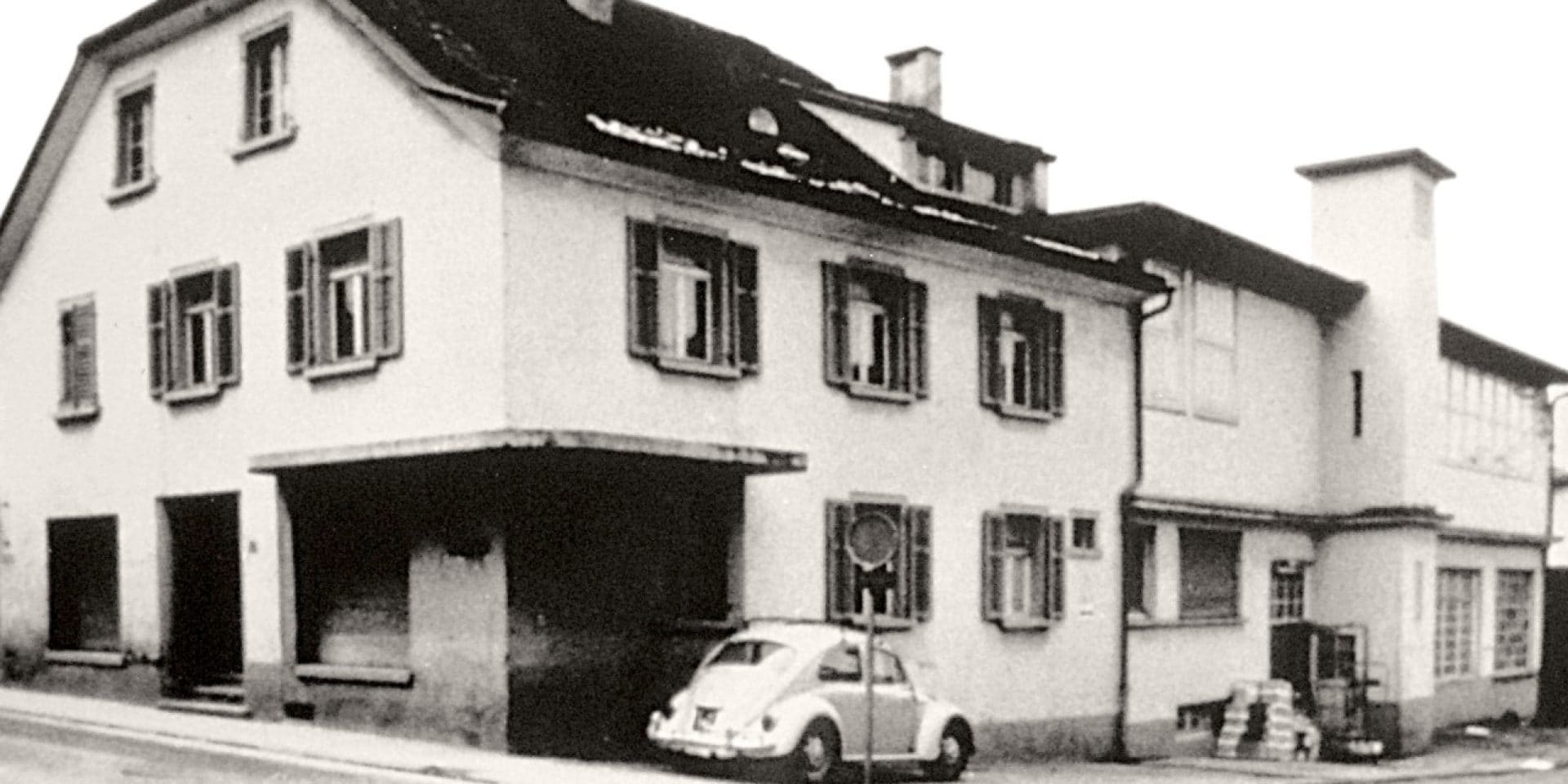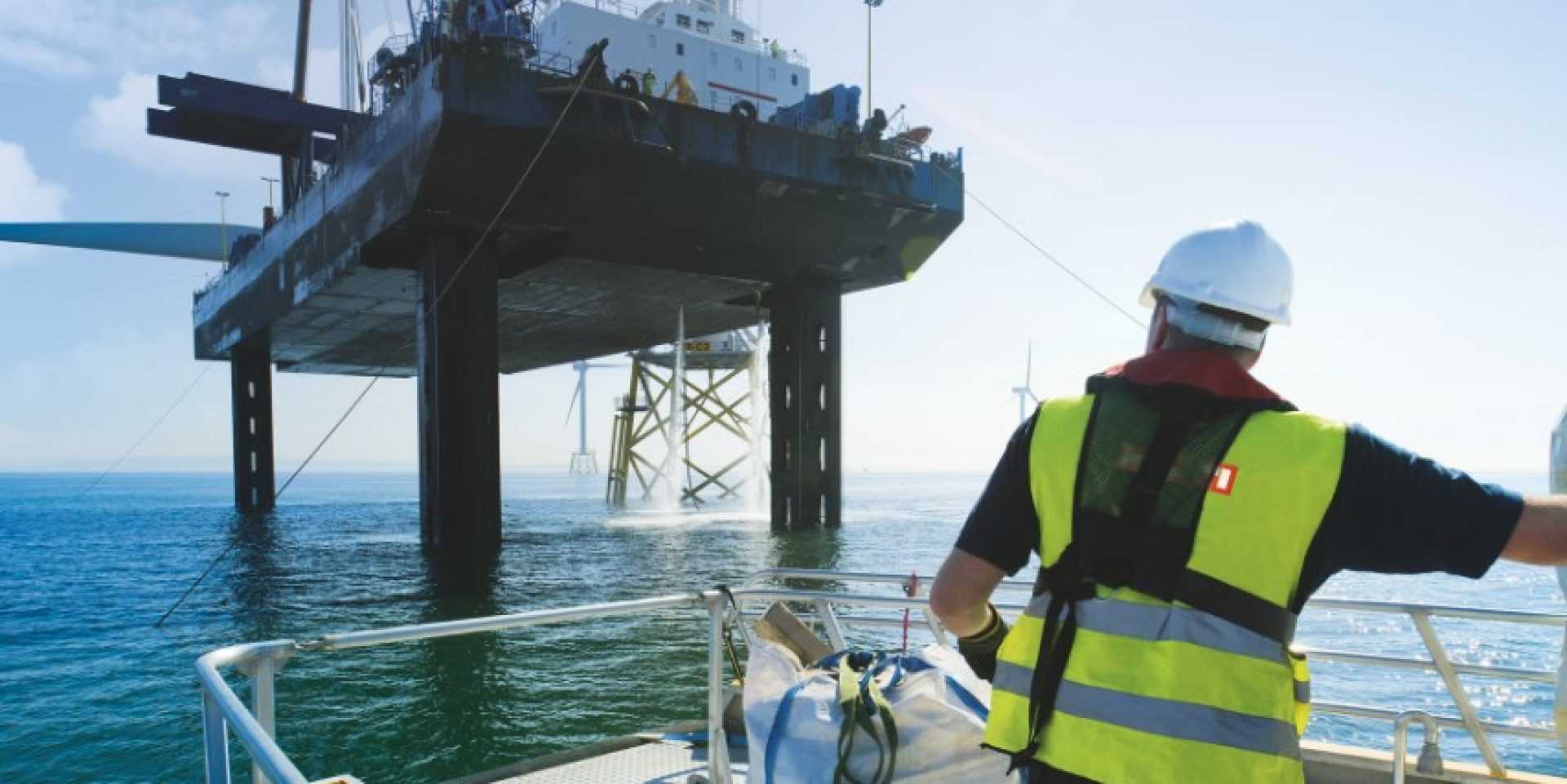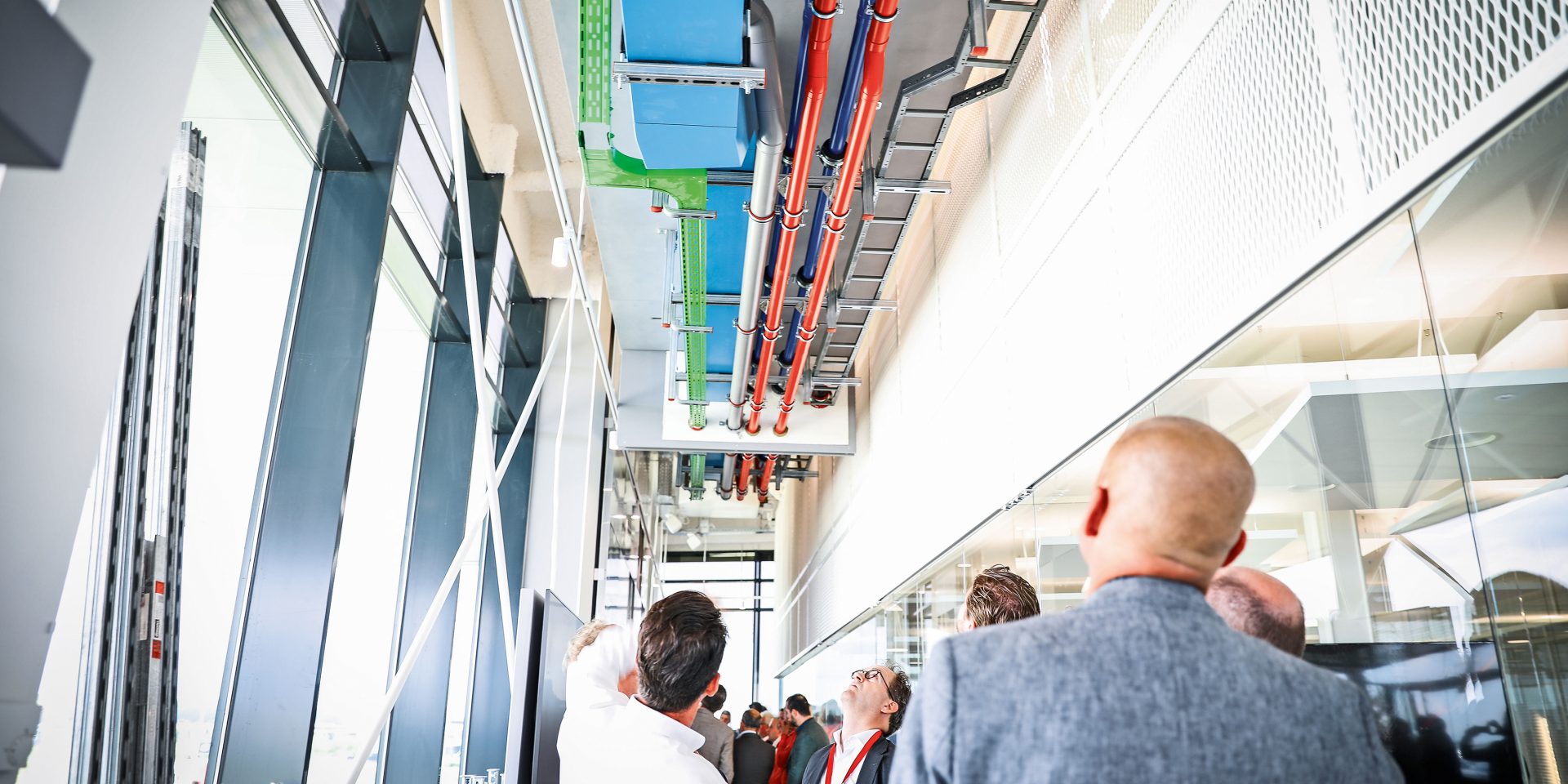OUR HISTORY
Take a look at our history from 1941 until now

We have come a long way since the company was founded in 1941, and we have big ambitions to grow. Take a look at our history to get a taste of what we can achieve.
1941 – Foundation

Engineer Martin Hilti (1915 – 1997) and his brother Eugen (1911 – 1964) founded Hilti Maschinenbau OHG in Schaan, Liechtenstein.
1957 – Breakthrough

The DX 100 is the first powder-actuated tool in the world, marking a technological breakthrough for Hilti. By the early 60s, Hilti is active in around 30 countries.
1964 – Farewell

Eugen Hilti, one of the company cofounders, dies on November 20 at the age of 53. As an outstanding organizer, he greatly contributed to the expansion of the company in Schaan. He was also deeply involved in the State Apprentices Commission until his untimely death.
1967 – Powerful innovations

With the introduction of the Hilti TE 17, the first electro-pneumatic hammer drill, the TE series evolves into the most comprehensive series of tools. In the same period, Hilti develops the first mechanical anchor system.
1970 – International production facilities

The first international production facility opens in Thüringen, Vorarlberg (Austria). One year later, a production facility opens in Kaufering, near Munich (Germany). With the opening of the production site in Matamoros (Mexico) in 2009, Hilti now has eight production facilities: Schaan (Liechtenstein), Thüringen (Austria), Kaufering and Strass (Germany), Zhanjiang and Shanghai (China) as well as Kecskemét (Hungary).
1973 – Expansion

The newly established Hilti Entwicklungsgesellschaft (HEG) in Munich (Germany) develops drilling and mounting technologies and anchor systems. This follows the launch of a development center for steelworks equipment in Glasgow (Scotland) one year prior.
The company broadens its management base. A four-member Executive Board takes up its duties. Already in 1975 board membership was rearranged and expanded to include five members. Michael Hilti joins the company and takes over the area of marketing and sales.
1980 – Reallocation and securing the company’s future

Formation of the market regions America, Africa, Asia and Europe. This measure brings the company closer to the regional markets, ensuring that customer needs are better served.
Establishment of the Martin Hilti Family Trust. The renunciation of an inheritance by all of Martin Hilti’s direct descendants lays the cornerstone for long-term company security.
1985 – Strategy 2000 and leadership

The product areas of anchor systems, direct fastening, and drilling and demolition are realigned as fully functioning product divisions. Every division comprises the functions of product management, R&D, logistics, controlling, purchasing, and production.
Market segments, improved service and new products: in 1986, Hilti presents the strategy 2000. Corporate culture is further developed under the motto “Leadership Makes the Difference”.
1990 – Management change

Martin Hilti cedes the position of CEO to his son Michael, who had been appointed Vice Chair of the Executive Board in 1982. Martin Hilti himself remains Chairman of the Board of Directors.
In 1994, Pius Baschera is the first non-family member to take the reins of the company. Martin Hilti cedes the postion of Chairman of the Board of Directors to Michael Hilti and remains on the Board of Directors as Honorary Chairman.
1991 – Globalization and networking

Continuous build-up of international markets. Other branches follow, such as in Russia, South America and Asia. Globalization begins for Hilti, and is further achieved at the IT level, in 2002, with the launch of globally standardized business processes and data, which turns out to be the basis for substantial gains in efficiency and productivity.
1996 – Champion 3C

The new Champion 3C strategy focusses the company on the three core aspects of customer, competence and concentration. This gives the company an enormous boost in productivity.
1997 – Legacy

Martin Hilti, cofounder of the company, dies on August 19 at the age of 82. He leaves behind his life’s work, a company that enjoys long-term security and that will endure on the basis of a finely balanced management structure that depends on no single individual.
2003 – Award and changes to Executive Board and Board of Directors

The Hilti Group is awarded the “Carl Bertelsmann Prize” for its exemplary corporate culture. One year later the further development of this topic sees the introduction of Our Culture Journey, the core of which is regular training sessions and the continuous development of all employees around the world.
At the end of the year Pius Baschera hands over responsibility to Bo Risberg as CEO. Baschera becomes Chairman of the Board of Directors. Michael Hilti remains a member of the Board of Directors.
2011 – Currency appreciation

One aftereffect of the world financial crisis is the strong Swiss franc. Hilti reacts by ensuring that future currency fluctuations can be better softened.
The Group's Executive Board is enlarged from four members to six and is restructured. This sets the course for the company to remain dynamic and future-oriented.
2014-2016 – Strategy and commitment

Christoph Loos becomes the fifth CEO in the history of Hilti. The focus of the new “Champion 2020” corporate strategy is sustainable value creation through leadership and differentiation.
At the same time, Hilti opens up a new and modern innovation center in 2015 and completely renovates its headquarters and the company premises in 2016, signaling its commitment to the location of Liechtenstein.
In the anniversary year of 2016 more than 24,000 employees work for Hilti in more than 120 countries.
2017-2018 – Group Sales and Acquisitions

Hilti strengthens its position in the offshore market with the acquisition of the Norwegian Oglaend System Group. This marks the biggest company acquisition in Hilti’s history.
In December 2017, the Hilti Group broke the CHF 5 billion barrier in sales for the first time in the history of the company
During the 2018 Annual General Meeting of Hilti Corporation, Michael Hilti was elected Honorary Chairman of the Board of Directors for life.
With the acquisition of the Austrian bst Brandschutztechnik Döpfl GmbH and its German sales subsidiary, Hilti has expanded its offering for fire-protection solutions for the energy and industry sector.
2019-2020 – BIM Experience Center / Shift in Management

Hilti has opened the BIM Experience Center in Rotterdam. The center brings to life the digital evolution of construction projects through the combination of applications, services and digital elements.
In 2020 Marco Meyrat will become, as previously planned, a member of the Board of Directors, a Trustee of the Martin Hilti Family Trust and will also serve as President of the Hilti Foundation. His successor on the Executive Board is Joaquim Sardà Solsona, who was previously Region Head for Southern Europe and General Manager of the Italian Market Organization. Avraham Kahn is also new to the Executive Board in 2020. He previously served as head of the region North America. He replaces Jörg Kampmeyer who moved to the Gebr. Knauf KG company.
